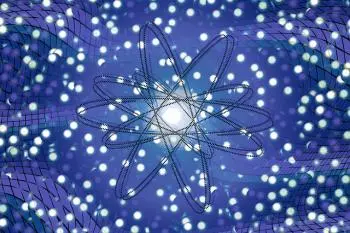
A subatomic particle is a particle smaller than the atom. Some subatomic particles can be part of atoms.
All the chemical elements of the periodic table are formed by the different composition of three subatomic particles: the neutron, the proton and the electron.
The origin of the word atom comes from the Greek and means indivisible. The concept of indivisible comes from the first atomic model of Democritus in which the atom was believed to be the smallest element that could exist. However, today we know that the atom is made up of other, even smaller particles.
All atoms of any element contain protons, neutrons, and electrons, with the exception of hydrogen-1 and the hydrogen cation. In this case, hydrogen-1 does not contain neutrons, and the hydrogen or hydron cation does not contain electrons.
Protons and neutrons make up the atomic nucleus. These types of subatomic particles are called nucleons, as they are part of the atomic nucleus.
Electrons and protons are commonly used in particle accelerators
The electron, the smallest subatomic particle
Electrons orbit around the atomic nucleus. The electron is the lightest of the three particles that make up the atom.
The electron has a negative electric charge and is defined as the elemental electric charge. Currently it is unknown if it has a substructure, so it is considered an elemental particle.
The discovery of the electron by JJ Thomson in the 19th century marked a turning point in the theory of atomic models.
The proton, the particle that defines a chemical element
The proton is one of the two atomic subparticles that make up the nucleus of an atom. The number of protons in the nucleus is the number that distinguishes one atomic number from another.
The mass of a proton is 1836 times the mass of the electron and it has a positive charge.
Neutron, the negatively charged nucleon
The neutron has a mass very similar to that of the proton but slightly less. The neutron has a neutral electrical charge (neither positive nor negative).
Outside the atomic nucleus, neutrons are not stable and their half-life is less than 15 minutes.
The neutron was the last subparticle of the atom to be discovered. The discoverer was James Chadwick as early as the 20th century.
What are quarks?
A quark is a type of elementary particle and a fundamental constituent of matter. All commonly observable matter is made up of quarks and electrons.
The proton and neutron are not elementary particles, but are a composite of other particles called quarks.